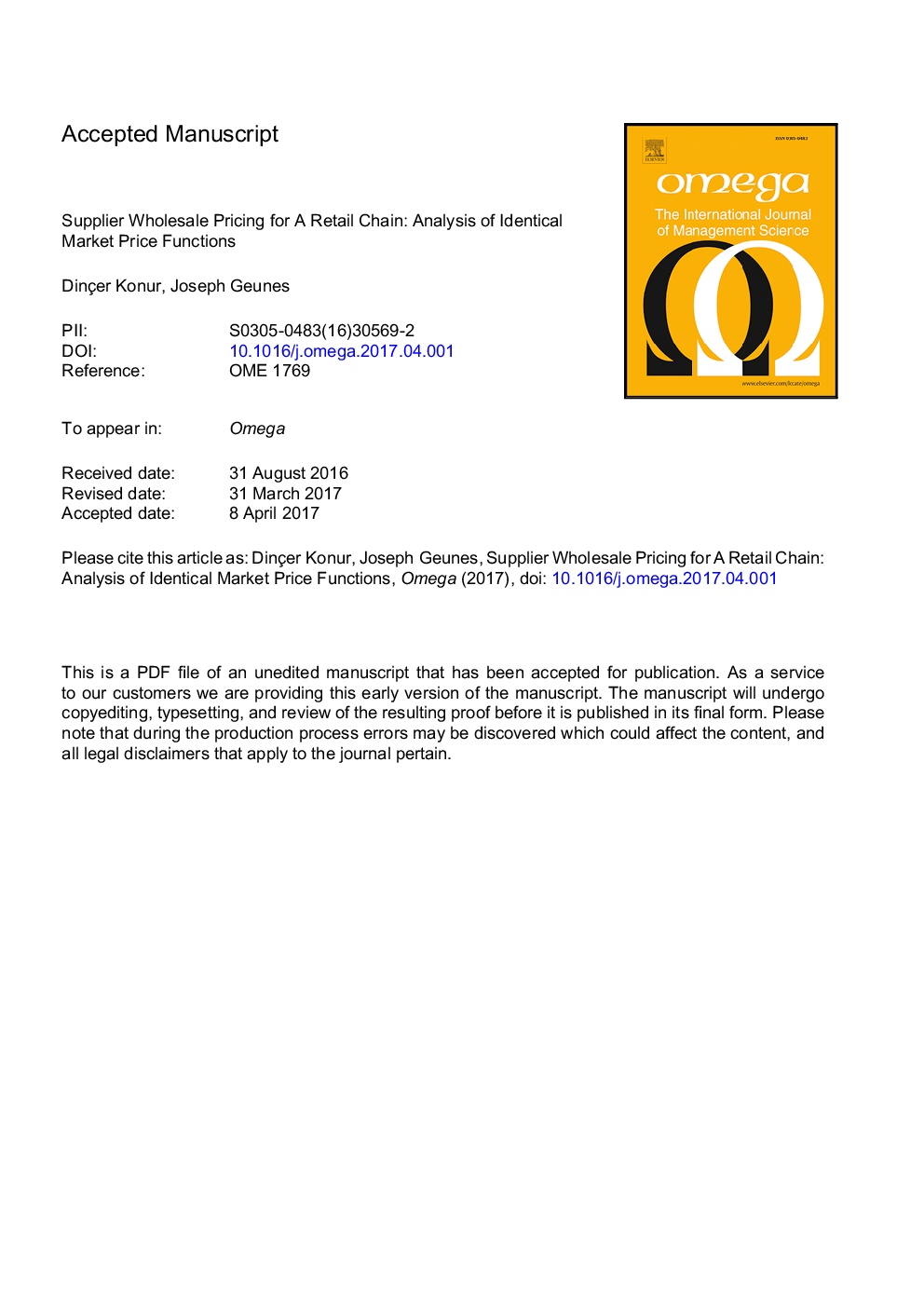| Article ID | Journal | Published Year | Pages | File Type |
|---|---|---|---|---|
| 7436706 | Omega | 2018 | 21 Pages |
Abstract
In a recent study, Konur and Geunes (2016) analyzed a supplier's pricing decisions for a retail chain that owns and can control a set of retail stores. They assumed that each retail store's market price function is individually defined and discussed variational inequality formulations and numerical approximations for determining optimal decisions at the retail and supply stages, respectively. In this communication, we revisit the model of Konur and Geunes (2016) for the case with identical market price functions. This special case is relevant in several practical settings, such as when retail stores compete for sales of the same product within a market in which customers do not have strong store preferences (i.e., stores' market base is the same), when the retail stores offer price matching guarantees, and when the retail chain adopts uniform pricing for its stores. Here, we provide exact methods (rather than a variational inequality formulation approach) for the retail stage and an explicit characterization (rather than a numerical approximation approach) for the supply stage under the special case. The additional analysis leads to new insights about the dynamics between the stages in the channel.
Keywords
Related Topics
Social Sciences and Humanities
Business, Management and Accounting
Strategy and Management
Authors
Dinçer Konur, Joseph Geunes,
